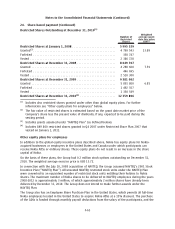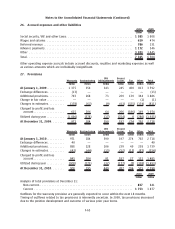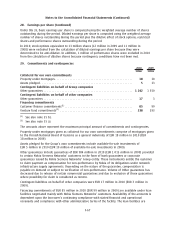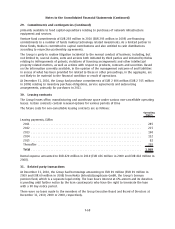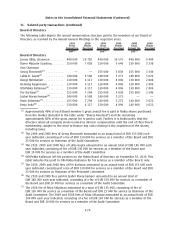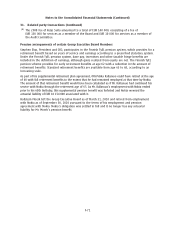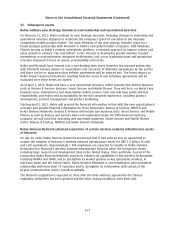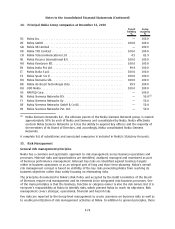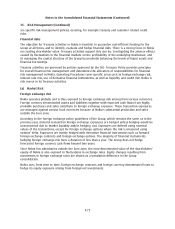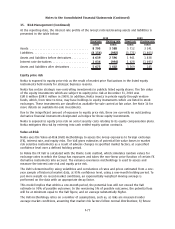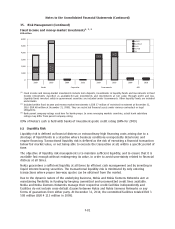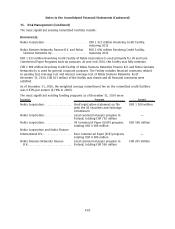Nokia 2010 Annual Report Download - page 261
Download and view the complete annual report
Please find page 261 of the 2010 Nokia annual report below. You can navigate through the pages in the report by either clicking on the pages listed below, or by using the keyword search tool below to find specific information within the annual report.33. Subsequent events
Nokia outlines new strategy, introduces new leadership and operational structure
On February 11, 2011, Nokia outlined its new strategic direction, including changes in leadership and
operational structure designed to accelerate the company’s speed of execution in the intensely
competitive mobile product market. The main elements of the new strategy includes: plans for a
broad strategic partnership with Microsoft to build a new global mobile ecosystem, with Windows
Phones serving as Nokia’s primary smartphone platform; a renewed approach to capture volume and
value growth to connect “the next billion” to the internet in developing growth markets; focused
investments in nextgeneration disruptive technologies; and a new leadership team and operational
structure designed to focus on speed, accountability and results.
Nokia and Microsoft have entered into a nonbinding term sheet, however, the planned partnership
with Microsoft remains subject to negotiations and execution of definitive agreements by the parties
and there can be no assurances that definite agreements will be entered into. The future impact to
Nokia Group’s financial statements resulting from the terms of any definitive agreements will be
evaluated once those terms are agreed.
As of April 1, 2011, Nokia will have a new operational structure, which features two distinct business
units in Devices & Services business: Smart Devices and Mobile Phones. They will focus on Nokia’s key
business areas: smartphones and massmarket mobile phones. Each unit will have profitandloss
responsibility and endtoend accountability for the full consumer experience, including product
development, product management and product marketing.
Starting April 1, 2011, Nokia will present the financial information in line with the new organizational
structure and provide financial information for three businesses: Devices & Services, NAVTEQ and
Nokia Siemens Networks. Devices & Services will include two business units: Smart Devices and Mobile
Phones as well as devices and services other and unallocated items. For IFRS financial reporting
purposes, we will have four operating and reportable segments: Smart Devices and Mobile Phones
within Devices & Services, NAVTEQ and Nokia Siemens Networks.
Nokia Siemens Networks planned acquisition of certain wireless network infrastructure assets
of Motorola
On July 19, 2010, Nokia Siemens Networks announced that it had entered into an agreement to
acquire the majority of Motorola’s wireless network infrastructure assets for USD 1.2 billion in cash
and cash equivalents. Approximately 7 500 employees are expected to transfer to Nokia Siemens
Networks from Motorola’s wireless network infrastructure business when the transaction closes,
including large research and development sites in the United States, China and India. As part of the
transaction, Nokia Siemens Networks expects to enhance its capabilities in key wireless technologies,
including WiMAX and CDMA, and to strengthen its market position in key geographic markets, in
particular Japan and the United States. Nokia Siemens Networks is also targeting to gain incumbent
relationship with more than 50 operators and to strengthen its relationship with certain of the
largest communication service providers globally.
The Motorola acquisition is expected to close after the final antitrust approval by the Chinese
regulatory authorities has been granted and the other closing conditions have been met.
F73
Notes to the Consolidated Financial Statements (Continued)


